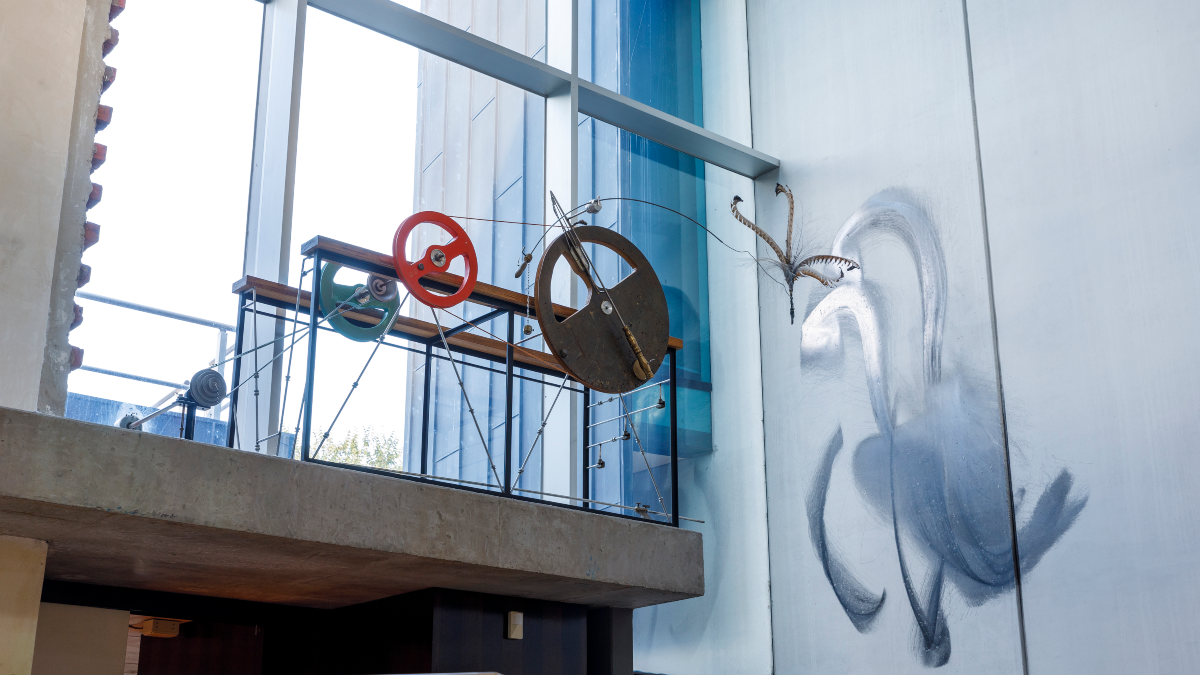MILLKULTURE

Image Credit: Andrew Curtis
Title: MILLKULTURE
Artist: Cameron Robbins
Year: 2015
Location: Yarra Ranges Regional Museum
Coordinates: Latitude: 37.755850 Longitude: 145.353460
Summary
MILLKULTURE is a permanent kinetic installation at the Yarra Ranges Regional Museum. Powered by wind, the drawing machine connects inside and outside worlds.
Inspiration
Artist Cameron Robbins is inspired by the underlying structures and rhythms of natural forces. His works typically aim to make these forces tangible by connecting the inside and outside worlds.
In MILLKULTURE , Cameron connects the two worlds through mechanical linkages responding to the natural energy of wind.
Meet the Artist
3-Minute version
10-Minute version
Features
Located in the museum’s breezeways, this cleverly designed installation is set in motion. A slowly rotating 3-metre diameter turbine wheel harnessing wind on the exterior of the building drives the sturdy mechanism.
In the café, this causes a stone to slowly revolve, reminding us of a meteorite. According to legend, a meteorite formed the nearby cave at Cave Hill, which later became a limestone quarry.
Inside the Museum, a series of wheels drive a long graceful arm. This supports a bird-like object with lyrebird tail feathers and a beak of graphite.
On windy days, the object is able to move about the room and strike the concrete wall. Over time the strike marks accumulate and cause the sculpture to act as a ‘mill’ of time and culture.
The installation also features a series of fossils cast into bronze which are attached to the internal wheel. The fossils are part of the Yarra Ranges Collection and were extracted from the original Cave Hill limestone quarry.
Visiting
MILLKULTURE is located at Yarra Ranges Regional Museum. It sits in the breezeways between the original 1889 museum building and recent extensions.
Free entry to the museum. See the museum's opening hours here to plan your visit. Closed public holidays.
Commission Details
Yarra Ranges Council was granted $90,000 for MILLKULTURE through the Victorian State Government’s Victorian Public Sculpture Fund